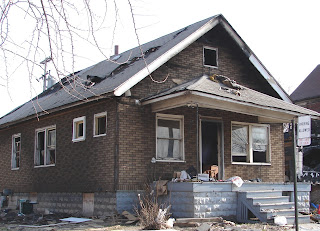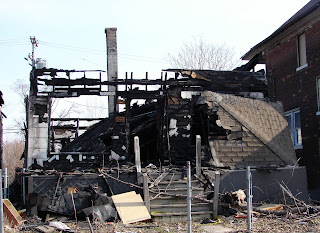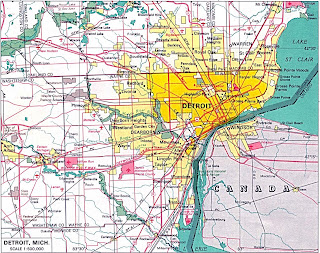Gardening with the kids
One of the neighbors on our street has offered up her enormous yard for a community garden. I met with some of the kids and we started to dig up a sizable plot and decided it would be named the "All Saints Kids Garden." So far, with the extreme assistance and generosity of the Greening of Detroit's Garden Resource program, we have planted:
- Green leaf lettuce
- Red leaf lettuce
- Kale
- Collard Greens
- Green cabbage
- Red Cabbage
- Cayenne Peppers
- Jalapeño peppers
- Watermelon
- Sweet yellow peppers
- Golden cherry tomatoes
- Stripped German tomatoes
- Pink Beauty tomatoes
- Green Zebra tomatoes
- Amish paste tomatoes
- Italian parsley
- Genovese basil
- Zinnias
- Marigolds
- Calendula
Lafayette Park
Our grand opening celebration for Lafayette Park in June 21! Part of getting ready for this is to organize clean-up, graffiti removal and flower planting before the big day. I have been working with this really excellent group called Detroit Synergy and they are helping provide some marketing and people power for what I have decided to call Love our Parks Day. Next steps include getting the neighbors excited and involved, getting the kids to help out, and figuring out how in the world I am going to organize the replanting of two entire parks.
Nuisance and Blight
I spent an afternoon last week driving around with one of the teen boys that comes to the center (I told him he had to be my bodyguard) to take pictures and document illegal dumping in alleys, dangerous vacant buildings, and other nuisance properties. I have spent the last couple of days writing letters to HUD, Detroit Buildings and Safety Engineering Dept and the Nuisance Abatement Task Force. In an ideal world, the HUD homes will be sold and moved into ASAP, BSED will tear down the dangerous and unsalvageable homes, and the Nuisance Abatement Task Force will take homeowners to court until they clean up their properties and make them livable again.
However, in the real world, what seems to be happening is HUD ignores us, the Task Force is too backed up, and the houses sit there until they are burned down. And then we hassle BSED until they demolish them. On the upside, however, one of those three houses on Cahalan that we had residents sign a petition about has been taken down in the last week, so that's definitely a positive for Cahalan street.
I think my day is pretty much spent now... I will definitely post some pictures of the garden soon!





